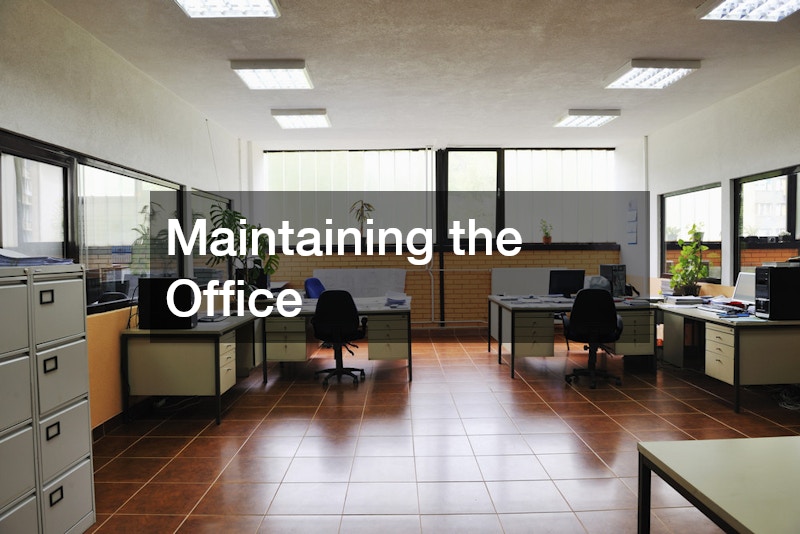Learning the Business
The United States, often regarded as the land of opportunity, hosts one of the world’s most powerful and diverse economies. It’s a dream destination for startups, small businesses, and multinational corporations alike. With a large consumer base, advanced infrastructure, and global influence, doing business in the US offers significant potential for profit and growth.
However, this immense promise often comes with equally significant challenges—many of which are hidden beneath the surface. Whether you’re a foreign entrepreneur entering the American market or a local business owner aiming to expand, it’s crucial to recognize and prepare for the less-obvious barriers that can impact your success.
Here are 10 hidden challenges businesses face when doing business in the US, ranging from regulatory complexities to navigating cultural nuances. Alongside each challenge, we highlight key industries—such as bookkeeping services, personal loans, general contracting, and more—that illustrate how these challenges play out in real life.
1. The Complex Regulatory Environment

One of the biggest obstacles when doing business in the US is managing its intricate and often confusing regulatory structure. The country’s legal environment includes federal, state, and local laws that frequently overlap or contradict each other. For newcomers and even established businesses, this can quickly become overwhelming.
Take, for example, a bookkeeping service looking to expand into different states. Each state has its own licensing requirements, tax codes, and compliance standards. What’s permissible in Texas may require extensive documentation and approval in California.
Moreover, sectors like finance, healthcare, and energy are subject to even more stringent federal oversight. Failure to comply with these regulations—no matter how minor the infraction—can result in hefty fines, lawsuits, or even the revocation of operating licenses.
A reliable approach to managing regulatory complexity is to consult local legal experts who understand the specific rules in each jurisdiction where you operate. These professionals can help your business manage evolving regulations and prepare the necessary documentation to remain compliant. Additionally, businesses should consider investing in compliance software that automates updates on regulation changes and helps streamline required filings. Forming partnerships with local firms, particularly for services like bookkeeping or legal representation, provides a safety net and ensures you’re not blindsided by obscure rules or bureaucratic missteps.
2. Grappling with Diverse Market Demographics
Another hidden challenge of doing business in the US is the incredible diversity of its market demographics. There’s no one-size-fits-all consumer profile. Buying behaviors, language preferences, income levels, and cultural attitudes vary significantly between regions and groups.
For instance, a personal loans company must customize its marketing and lending criteria depending on local credit behaviors, state lending caps, and regional income patterns. What appeals to a suburban family in Ohio may not resonate with a young entrepreneur in San Francisco.
Cultural sensitivity, inclusive branding, and targeted advertising aren’t optional—they are essential. Failing to understand the demographic you’re targeting can lead to poor product-market fit and a wasted marketing budget.
To overcome this challenge, businesses should conduct segmented market research that targets specific regions and cultural groups. This includes understanding language preferences, consumer behavior, income brackets, and even social values. Using customer personas and demographic data tools will help refine your product offerings and messaging. Additionally, collaborating with local marketing agencies or community organizations can help you build credibility and trust with diverse audiences, which is vital for long-term customer retention and brand loyalty.
3. Keeping Up with Rapid Technological Changes

Innovation is a hallmark of doing business in the US, but it also presents a challenge: staying relevant amid rapid technological advancement. Whether you’re a startup or an established general contractor, customers and clients expect you to deliver seamless, tech-enabled experiences.
For general contractors, this might mean adopting project management tools, CRM systems, and even drone inspections for site management. Clients often expect contractors to provide digital estimates, automated scheduling, and progress tracking—all through a mobile app.
Falling behind can quickly damage your reputation. Consumers are accustomed to fast, seamless, and tech-driven service. If your business can’t meet those expectations, competitors will.
To stay competitive, businesses need to adopt a culture of continuous innovation and technological investment. This includes regularly auditing your technology stack, identifying outdated systems, and upgrading to modern platforms that improve efficiency. Hiring a dedicated IT consultant or tech-savvy operations manager can help evaluate new tools and assure seamless integration with existing workflows. Participating in industry conferences and subscribing to tech publications can also keep you informed about emerging trends and tools relevant to your sector.
4. Navigating the Legal and Taxation System
A significant hidden burden when doing business in the US is the complex legal and taxation system. From federal corporate taxes to state-specific sales tax, the requirements vary widely and often change annually, leaving many businesses scrambling to keep up.
This complexity becomes especially daunting in industries that face legal scrutiny, such as finance, health, and legal services. A bankruptcy attorney, for example, must operate within highly regulated ethical boundaries while also understanding the tax implications for clients and themselves.
Litigation risk is also much higher in the US compared to many other countries. Businesses must carry liability insurance and legal counsel, as lawsuits can emerge from customer disputes, labor issues, or intellectual property claims.
The best way to tackle legal and tax complexity is to create a multidisciplinary support team early in your business planning. This includes hiring a tax accountant experienced in multistate operations, a business attorney with knowledge of your industry, and insurance experts to evaluate liability risks. Regular reviews of tax strategies and legal documentation can help prevent compliance issues before they arise. Additionally, investing in cloud-based accounting and compliance platforms ensures your filings are up to date and gives you better visibility into your financial health.
5. Maintaining the Office

One of the operational realities of doing business in the US—particularly in areas with extreme weather—is the ongoing need for facility maintenance. The condition of your physical business location can directly affect customer experience and regulatory compliance.
A good example is the necessity of commercial roof inspection. Whether you’re in snow-prone Michigan or hurricane-affected Florida, regular roof inspections aren’t only advisable but often required by insurance providers.
Ignoring maintenance can lead to water damage, mold growth, or pest infestations—all of which can shut down operations and trigger liability lawsuits.
Business owners should plan for preventive maintenance as an ongoing investment rather than a reactive cost. This includes establishing annual contracts with certified vendors for services such as roofing, plumbing, HVAC, and pest control. A facility manager or office administrator should maintain a maintenance log and schedule regular inspections. Budgeting for unexpected repairs and incorporating asset depreciation into financial projections can also prevent unpleasant financial surprises.
6. Bringing in Customers
Customer acquisition is a make-or-break factor when doing business in the US. The market is intensely competitive, and simply having a good product or service isn’t enough. Visibility, reputation, and accessibility play critical roles.
Consider a commercial door installation company. It must not only offer quality craftsmanship but also deliver superior customer service, quick response times, and online convenience such as instant quotes and digital scheduling.
Most US consumers rely on Google reviews, Yelp ratings, and online directories. If your business doesn’t have a strong digital presence, you’ll miss out on potential leads—even if your service quality is excellent.
To win over customers in a competitive environment, businesses must prioritize visibility and credibility. This starts with building a professional website, optimizing for search engines (SEO), and maintaining active business listings on Google, Yelp, and industry-specific directories. Social proof—through customer reviews and testimonials—is a major decision-making factor for American consumers. Engaging with customers through email campaigns, social media platforms, and community events can further build loyalty and expand word-of-mouth referrals.
7. Dealing with Emergencies

One of the overlooked aspects of doing business in the US is preparing for emergencies—both natural and man-made. From hurricanes and wildfires to cyberattacks and power outages, American businesses face a wide range of threats.
A disaster restoration company can testify to how unprepared most businesses are. Restoration teams often find that companies lack backup servers, insurance coverage, or even basic evacuation plans. This lack of preparation can turn a temporary disruption into a permanent closure.
To build resilience, every business should develop a comprehensive emergency response plan tailored to its location and industry. This includes creating digital backups of critical data, storing emergency supplies on-site, and training staff on evacuation procedures. Business interruption insurance can mitigate financial losses, while service agreements with restoration companies can ensure faster response times after a disaster. By taking proactive measures, businesses can recover more quickly and minimize the long-term impact of unexpected events.
8. Ensuring Business Safety
Ensuring safety is a crucial component of doing business in the US, especially given the country’s strong regulatory emphasis on workplace health and security. No matter the size or sector of your operation, there are minimum safety standards you’re expected to meet.
Even businesses in low-risk sectors need to secure their premises. For example, a locksmith service is frequently needed to upgrade commercial security systems in areas with high crime rates or after break-ins.
Without proper safety protocols, you risk employee injury, theft, and property damage—all of which can cost your business financially and reputationally.
To reduce these risks, businesses should implement a multi-layered safety approach that includes both physical security and employee preparedness. This may involve installing surveillance cameras, motion sensors, and smart lock systems, especially in vulnerable access points. Employers should also conduct regular safety drills and keep emergency equipment such as first-aid kits and fire extinguishers accessible. Establishing a strong workplace safety culture won’t only reduce the risk of incidents but also improve employee morale and retention.
9. Adapting to Economic Fluctuations
Volatility is a defining feature of doing business in the US. The economy cycles through expansion and contraction, inflation and deflation, with each phase influencing customer demand, capital costs, and employee behavior.
Businesses tied to homeownership—like an HVAC system expert—feel this volatility deeply. During boom periods, there’s high demand for new installations and upgrades. But in downturns, homeowners may delay maintenance or opt for cheaper fixes.
Economic changes also affect hiring, wages, and inventory planning. Overextension during a bull market can spell disaster during a downturn.
To weather these economic shifts, businesses must build flexibility into their operations. This involves diversifying income streams through service add-ons, seasonal promotions, or alternate customer segments. Maintaining a cash reserve and reducing debt exposure can provide breathing room during slow periods. Monitoring key economic indicators, such as interest rate trends and housing market forecasts, allows for more strategic planning around hiring, pricing, and procurement.
10. Balancing Innovation and Regulation
The tension between creativity and compliance is a recurring theme when doing business in the US. Innovative companies often run into outdated or slow-moving regulatory systems that can delay or restrict product launches.
For instance, a company installing fire alarm systems must follow federal, state, and municipal codes. Adding smart or AI-driven features may improve safety, but these systems still must comply with strict fire safety laws, many of which have yet to catch up with new technologies.
Startups in fintech, healthcare, and energy often find themselves stuck between pushing for progress and waiting for regulatory approval. Missteps can lead to costly penalties or forced rollbacks of new products.
To avoid these pitfalls, businesses should integrate regulatory compliance into the innovation process from the beginning. This includes involving legal advisors, industry consultants, and compliance officers in the design and development of new products. Engaging with industry associations and attending regulatory hearings can also help businesses stay ahead of upcoming changes.
Executing with Confidence
Doing business in the United States is both an exciting and demanding endeavor. The market is full of potential, but the road to success is paved with hidden challenges that often catch even seasoned entrepreneurs by surprise. From understanding regulatory hurdles to respecting cultural diversity, and from managing emergencies to balancing innovation, every obstacle requires thoughtful preparation and strategic execution.
Whether you’re launching a bookkeeping service, managing a disaster restoration company, or innovating with fire alarm systems, awareness is your first defense. By staying informed, adapting quickly, and surrounding yourself with trusted partners, you can turn these hidden challenges into opportunities for growth.







